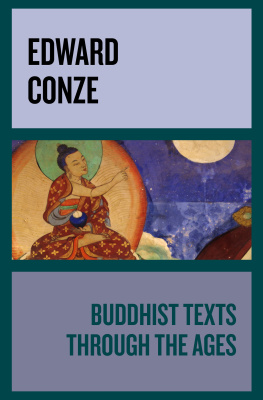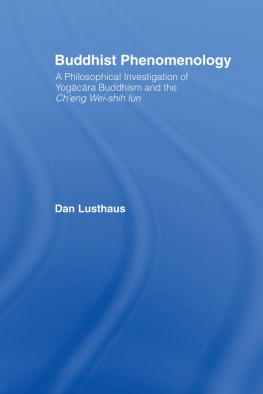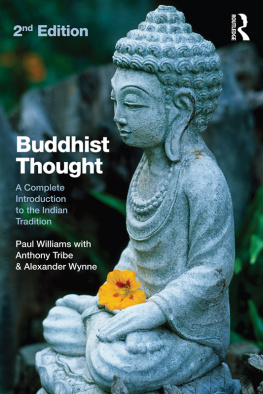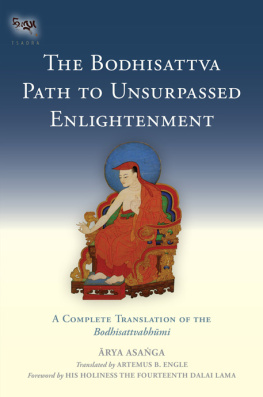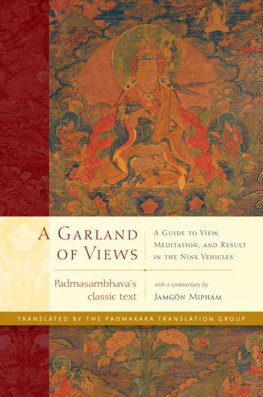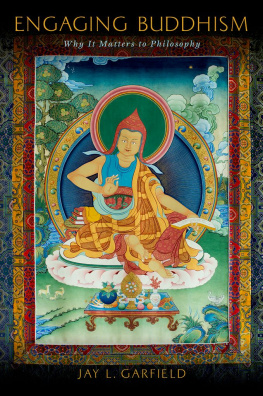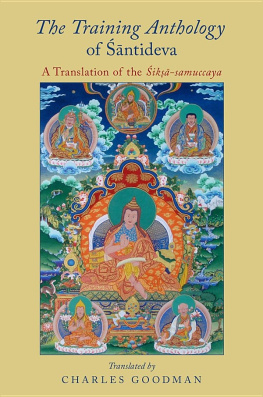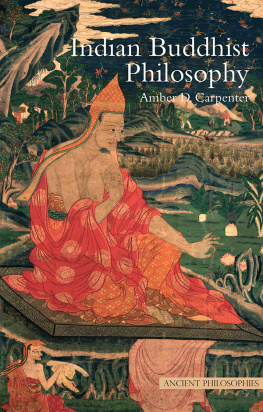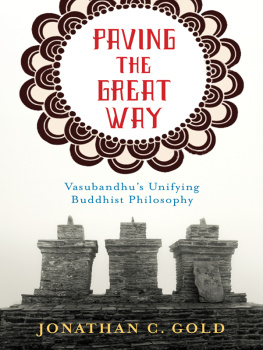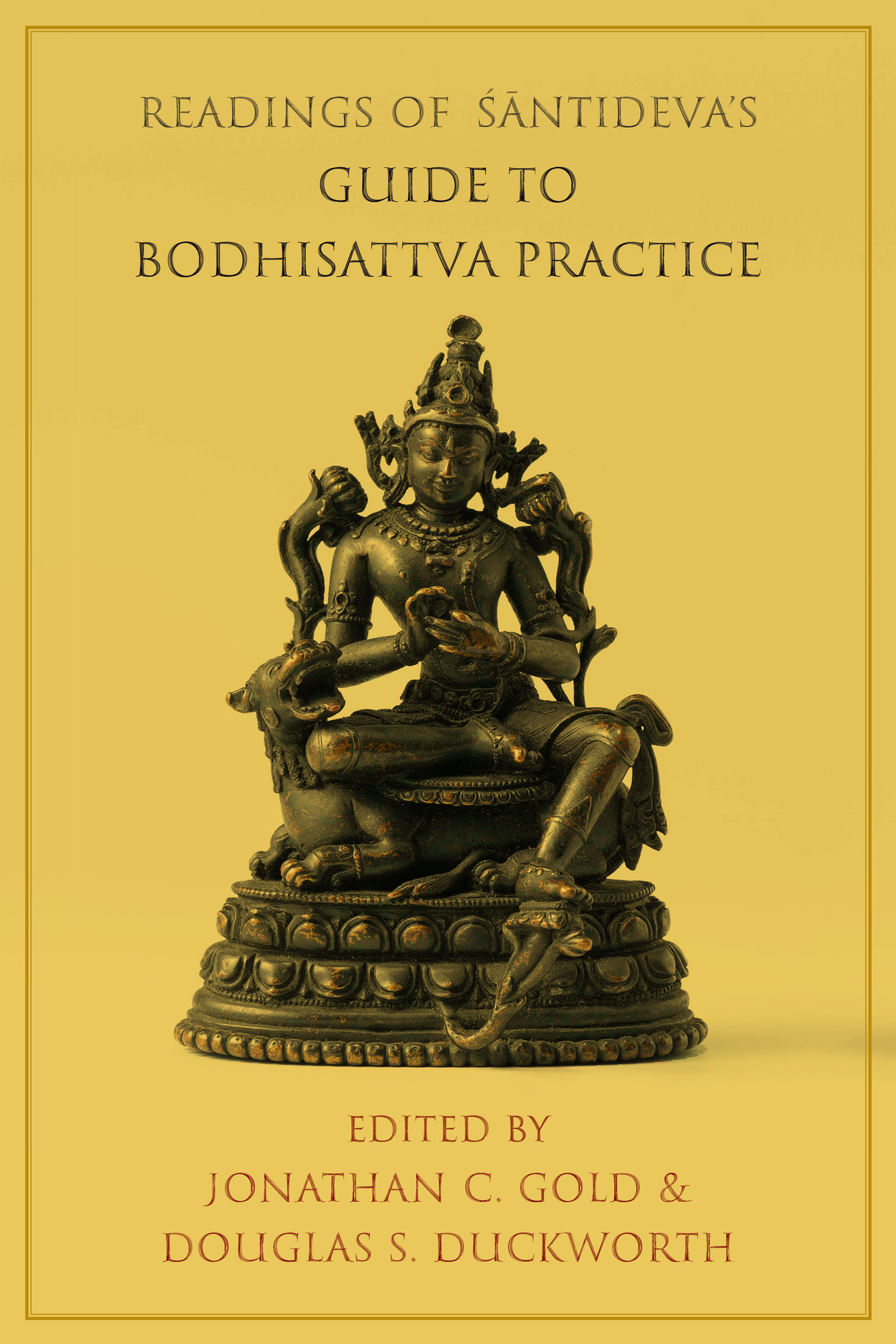Contents
Guide
Pagebreaks of the print version
READINGS OF NTIDEVAS GUIDE TO BODHISATTVA PRACTICE ( BODHICARYVATRA )
COLUMBIA READINGS OF BUDDHIST LITERATURE
COLUMBIA READINGS OF BUDDHIST LITERATURE
SERIES EDITOR: STEPHEN F. TEISER
This series is published with the sponsorship of the Dharma Drum Foundation for Humanities and Social Science Research.
Readings of the Lotus Stra, Stephen F. Teiser and Jacqueline I. Stone, editors
Readings of the Platform Stra, Morten Schltter and Stephen F. Teiser, editors
Readings of the Vessantara Jtaka, Steven Collins, editor
READINGS OF NTIDEVAS GUIDE TO BODHISATTVA PRACTICE ( BODHICARYVATRA )
Edited by Jonathan C. Gold and Douglas S. Duckworth
COLUMBIA UNIVERSITY PRESSNEW YORK

Columbia University Press
Publishers Since 1893
New York Chichester, West Sussex
cup.columbia.edu
Copyright 2019 Columbia University Press
All rights reserved
E-ISBN 978-0-231-54990-5
Library of Congress Cataloging-in-Publication Data
Names: Gold, Jonathan C., 1969 editor. | Duckworth, Douglas S., 1971 editor.
Title: Readings of ntidevas Guide to bodhisattva practice / edited by Jonathan C. Gold and Douglas S. Duckworth.
Description: New York : Columbia University Press, 2019. | Series: Columbia readings of Buddhist literature | Includes bibliographical references and index.
Identifiers: LCCN 2018055393 (print) | LCCN 2018056563 (ebook) | ISBN 9780231192668 (cloth : alk. paper) | ISBN 9780231192675 (pbk.)
Subjects: LCSH: ntideva, active 7th century. Bodhicaryvatra. | Mahayana BuddhismDoctrines.
Classification: LCC BQ3147 (ebook) | LCC BQ3147 .R43 2019 (print) | DDC 294.3/85dc23
LC record available at https://lccn.loc.gov/2018055393
A Columbia University Press E-book.
CUP would be pleased to hear about your reading experience with this e-book at .
Cover image: Bronze and silver image of the bodhisattva Manjushri, Bengal, Pala Dynasty, 11th century / Pictures from History / Bridgeman Images
In memory of
Luis O. Gmez (19432017)
CONTENTS
Jonathan C. Gold
Paul Harrison
Amber Carpenter
Sonam Kachru
Matthew T. Kapstein
Janet Gyatso
Reiko Ohnuma
Eric Huntington
Thupten Jinpa
Roger Jackson
Douglas S. Duckworth
Jay L. Garfield
Charles Goodman
Bronwyn Finnigan
John D. Dunne
T here is no standard English translation of the Guide to Bodhisattva Practice ( Bodhicaryvatra ). Each author in this volume makes plain which translation is being cited in her or his chapter. Unless otherwise noted, chapter and verse citations (e.g., 4.5) refer to traditional numbering (and not to Dunhuang versions). For advice and discussion of some widely used English translations, see : A Guide to Guide Translations: Advice for Students and Instructors.
Different authors also use different translations of certain technical terms, such as thought of enlightenment or Mind of Awakening for the term bodhicitta . Each of these translations appears in the index, and each refers the reader to the index entry for the original Sanskrit, which in turn lists all of the translations and their various locations in the book.
T he contributors to this volume met to share their work and plan the volume at a conference at Princeton University in February 2017 that was generously sponsored by the Numata Foundation (BDK), as well as the Princeton University Center for the Study of Religion and the Department of Religion. The Center for the Study of Religion has also provided financial support for this books production. A sabbatical leave from Temple University enabled Douglas Duckworth to lay the groundwork for his work on this project.
As always, thanks go to our families, with love and appreciation for cultivations of generosity and patience.
Jonathan C. Gold
T he book you are reading contains fifteen scholars assessments of what you might want to know as you read and study a much beloved work of late Indian Buddhism, the Guide to Bodhisattva Practice ( Bodhicaryvatra , hereafter Guide ) by ntideva (eighth century). This chapter is an introduction to this introduction. In the first section, I provide my own first pass at what I think ntideva is up to, by explicating the overarching themes of karmic merit, bodhicitta , and the unusual composition of a work that intertwines prayer, meditation, and philosophy. This is the reading of the Guide that I have to offer. In the second section, I turn to the reception history of the Guide, focusing especially on the relatively recent phenomena that have brought the Guide to prominence as a world classic. I argue that readers should not feel that they are doing anything new or unexpected when they appreciate the work for qualities only indirectly intended by its author(s). I wish to defend, therefore, the diverse employments of the Guide by historical as well as modern readers, while remaining respectful of traditional readings. In the final section, I summarize the chapters that follow, and wish you well.
BODHICITTA AND THE GUIDE S INVITATION TO PARTICIPATORY AUTHORSHIP
The Guide is distinctive within Indian Buddhist literature for its practical, psychologically vivid articulation of the Mahyna path. Although it is clearly composed for an audience well versed in Buddhist thought and experienced in philosophical and doctrinal analysis, it serves on its own as a complete guide to the practice. In the opening verses, ntideva says, with traditional modesty, that his work contains nothing that is new and is only intended for my own minds cultivation ( svamano bhvayitu , 1.2). There is an invitation to others with just my same constitution ( matsamadhtur eva , 1.3), who may benefit as well, but the implied reader is the author himself, and one gets the feeling of reading over the shoulder of a medieval Buddhist practitioner at prayer, study, and intensive personal psychological work.
Prayer composed in the first person was widespread and well known among Buddhists during ntidevas time. Also, there were countless scriptures and several comprehensive summaries of the doctrine in circulation that recommended various practices, assembled the stages of the bodhisattva paththe cultivations that can transform an ordinary person into an enlightened buddhaand surveyed the final attainments. The Guide weaves this literature together into a study of the Mahyna Buddhist path in the form of an extended aspirational prayer. It also includes within it, all tightly integrated: one of the most influential digests of Middle Way (Madhyamaka) philosophy; a great deal of ingenious theorization on the moral and practical implications of karma; and several innovative approaches to meditation.
The thread that reworks and binds these elsewhere distinct topics and genres is bodhicitta . Literally the mind of awakening, bodhicitta is the distinctive mindset of a bodhisattva, an aspiring and inevitable future buddha. This is what distinguishes a practitioner of the so-called Great Vehicle (Mahyna) from other Buddhists, who pursue liberation but do not presume to seek buddhahood. For this reason, bodhicitta is likened to a rare, magical gem or an alchemical elixir that turns base metals into gold ( Guide 1.1011).
What exactly is this mental state, and why is it so beneficial? It starts with compassionexpanded, deepened, and universalized: compassion that sees and knows the suffering of all living beings, everywhere, and wants nothing more than to alleviate it. Upon this ground, bodhicitta grows with the awareness, shared by all Mahyna Buddhists, that the only way to be truly free from suffering is to be established in buddhahoodand that therefore the best and most effective (the only truly effective) way to help beings attain freedom from suffering is to become, oneself, a fully enlightened buddha who can guide other beings to liberation. Bodhicitta, then, is the mental state that seeks to attain buddhahood in order to save all beings from suffering.


